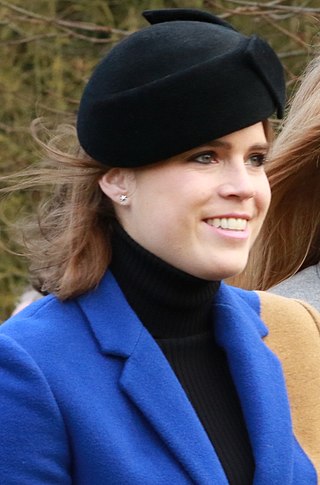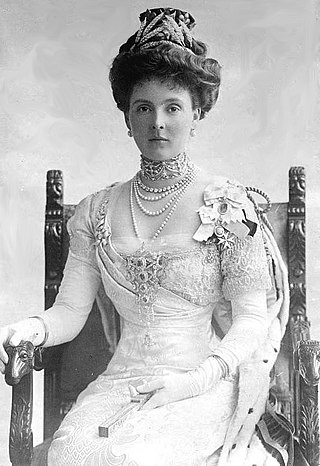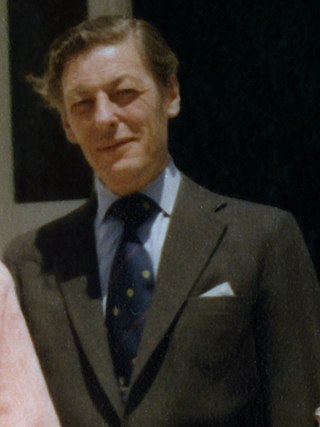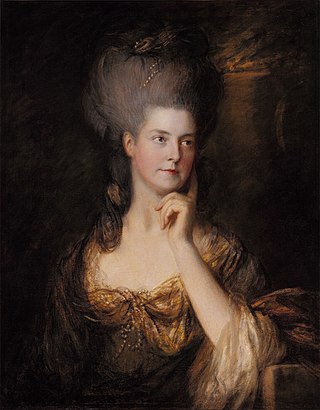The British royal family comprises King Charles III and his close relations. There is no strict legal or formal definition of who is or is not a member, although the Royal Household has issued different lists outlining who is a part of the royal family. Members often support the monarch in undertaking public engagements, and pursue charitable work and interests. Members of the royal family are regarded as British and world cultural icons.

Downing Street is a street in Westminster in London that houses the official residences and offices of the Prime Minister of the United Kingdom and the Chancellor of the Exchequer. In a cul-de-sac situated off Whitehall, it is 200 metres (660 ft) long, and a few minutes' walk from the Houses of Parliament. Downing Street was built in the 1680s by Sir George Downing.

The chancellor of the exchequer, often abbreviated to chancellor, is a senior minister of the Crown within the Government of the United Kingdom, and head of Treasury. As one of the four Great Offices of State, the chancellor is a high-ranking member of the British Cabinet.

Princess Eugenie, Mrs Jack Brooksbank is a member of the British royal family. She is the younger daughter of Prince Andrew, Duke of York, and Sarah, Duchess of York. She is a niece of King Charles III. At birth, she was 6th in the line of succession to the British throne and is now 11th. She is the younger sister of Princess Beatrice.

Princess Alice, Countess of Athlone was a member of the British royal family. She was the longest-lived Princess of the Blood Royal, and one of the longest-lived British royals. Princess Alice was the last grandchild of Queen Victoria, the sister-in-law of Queen Mary, and the aunt to Kings Edward VIII, George VI, and Queen Elizabeth II.

Alexander Cambridge, 1st Earl of Athlone, was a member of the extended British royal family, as a great-grandson of King George III, a brother of Queen Mary, uncle to the Kings Edward VIII and George VI, and the husband of Princess Alice of Albany. He was a British Army commander, who served as Governor-General of the Union of South Africa and Governor General of Canada.

Sir Angus James Bruce Ogilvy was a British businessman. He is best known as the husband of Princess Alexandra of Kent, a first cousin of Queen Elizabeth II. Ogilvy is also remembered for his role in a business scandal, known as the Lonrho affair, involving the breaking of sanctions against Rhodesia during the 1970s. In later years, he was involved in charity work.

Kensington Palace is a royal residence set in Kensington Gardens, in the Royal Borough of Kensington and Chelsea in London, England. It has been a residence of the British royal family since the 17th century, and is currently the official London residence of the Prince and Princess of Wales, the Duke and Duchess of Gloucester, the Duke and Duchess of Kent, Prince and Princess Michael of Kent and Princess Eugenie and her husband Jack Brooksbank and their two sons. Kensington Palace is sometimes used as a metonym for the offices of royals who officially reside there.

Frogmore is an estate within the Home Park, adjoining Windsor Castle, in Berkshire, England. It comprises 33 acres (130,000 m2), of primarily private gardens managed by the Crown Estate. It is the location of Frogmore House, a royal retreat, and Frogmore Cottage. The name derives from the preponderance of frogs which have always lived in this low-lying and marshy area near the River Thames. This area is part of the local flood plain. Its large landscaped gardens are Grade I listed on the Register of Historic Parks and Gardens.

Dorneywood is an 18th-century house near Burnham in southern Berkshire. Originally a Georgian farmhouse, it has Victorian and later additions, and following a fire in 1910, was remodelled in 1919 by Sir Robert Lorimer.

Historic Royal Palaces is an independent charity that manages the United Kingdom's unoccupied royal palaces:
The Court Circular is the official record that lists the engagements carried out by the monarch of the United Kingdom and the other Commonwealth realms; the royal family; and appointments to their staff and to the court. It is issued by St James's Palace and printed a day in arrears at the back of The Times, The Daily Telegraph and The Scotsman newspapers. An archive of the circular since 1997 is provided on the British monarchy's website.
An official residence is a residence designated by an authority and assigned to an official, and may be the same place where the office holder conducts their work functions or lives.

Royal Lodge is a Grade II listed house in Windsor Great Park in Berkshire, England, half a mile north of Cumberland Lodge and 3.2 miles (5.1 km) south of Windsor Castle. The site of homes since the 17th century, the present structure dates from the 19th century, and was expanded in the 1930s for the then Duke of York, the future King George VI. Its central section consists of three storeys, with two-storey wings, totalling about 30 rooms, including seven bedrooms. The Royal Chapel of All Saints was built on the grounds in the 1820s.

Frogmore House is a 17th-century English country house owned by the Crown Estate. It is a historic Grade I listed building. The house is located on the Frogmore estate, which is situated within the grounds of the Home Park in Windsor, Berkshire. Half a mile south of Windsor Castle, Frogmore was let to a number of tenants until the late 18th century, when it was used intermittently as a residence for several members of the British royal family.

Maria, Duchess of Gloucester and Edinburgh was a member of the British royal family. She was the Countess Waldegrave from 1759 to 1766, as a result of her first marriage to James Waldegrave, 2nd Earl Waldegrave. Her second husband was Prince William Henry, Duke of Gloucester and Edinburgh, whom she married in 1766.

St George's Chapel, formally titled The King's Free Chapel of the College of St George, Windsor Castle, at Windsor Castle in England is a castle chapel built in the late-medieval Perpendicular Gothic style. It is a Royal Peculiar, and the Chapel of the Order of the Garter. St George's Chapel was founded in the 14th century by King Edward III and extensively enlarged in the late 15th century. It is located in the Lower Ward of the castle.

Nottingham Cottage is a house in the grounds of Kensington Palace in London. As a grace-and-favour property, the house has been frequently occupied by members of the British royal family, as well as staff and employees.

Frogmore Cottage is a historic Grade II listed home on the Frogmore estate, which is part of Home Park in Windsor, England. The cottage was described as a 5,089 sq ft (472.8 m2), four bedroom and nursery, four bathroom single-residence house in 2020.





















